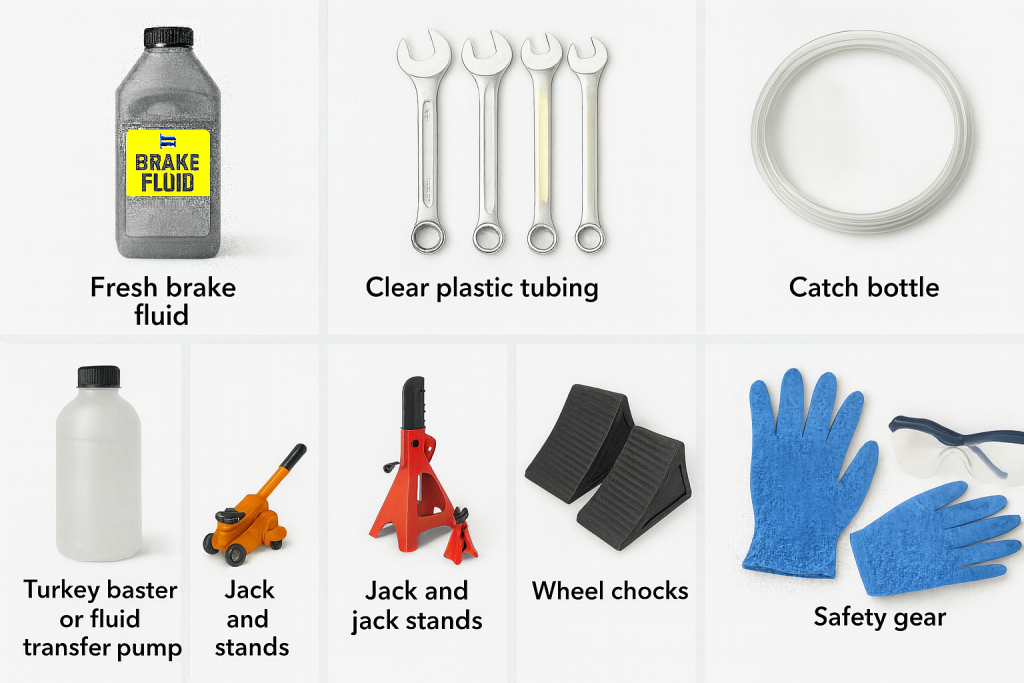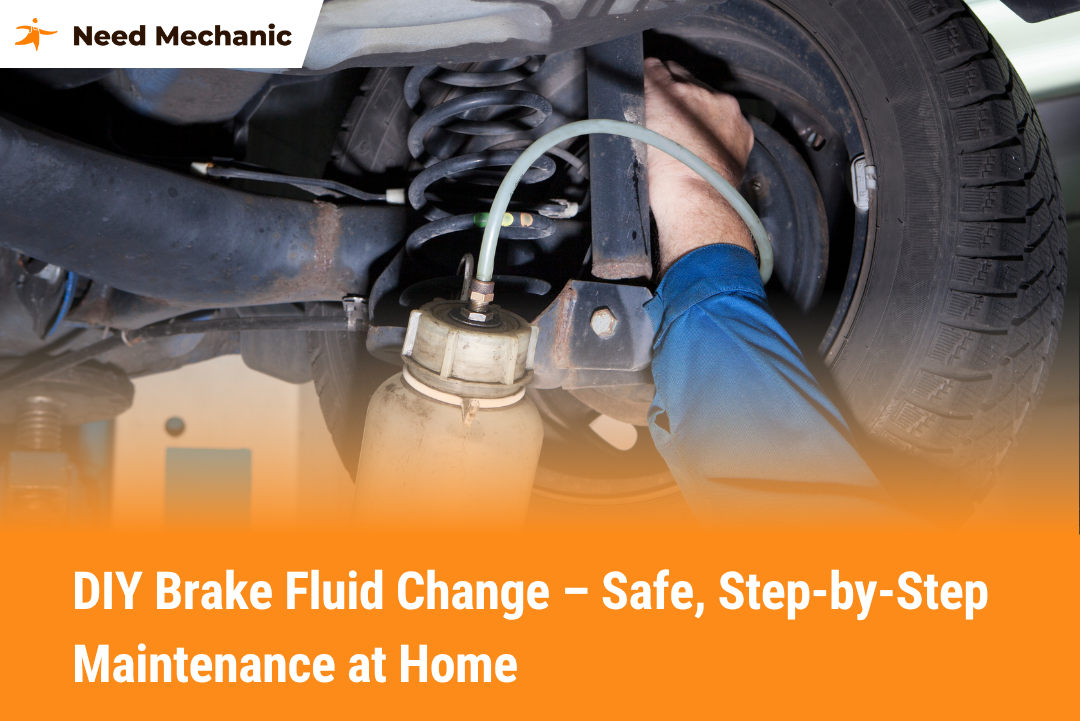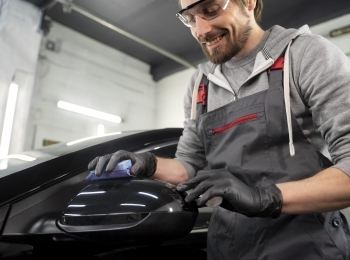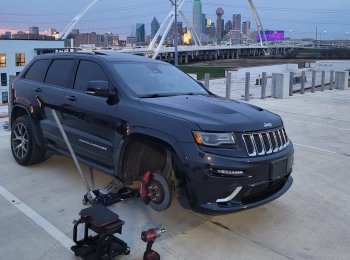Yes, you can change your brake fluid yourself if you have the right tools, follow safety steps, and know your vehicle’s requirements. The process involves draining the old, moisture-contaminated fluid from your brake lines, replacing it with fresh fluid, and bleeding the system to remove air. Done correctly, this improves braking performance, extends the life of brake parts, and saves you money compared to having it done at a shop. This guide walks you through when to change it, the tools you’ll need, step-by-step instructions, and tips for getting professional-level results at home.
Table of Contents
- Understanding the Role of Brake Fluid
- Signs It’s Time to Change Brake Fluid
- Can You Change Brake Fluid Yourself?
- Tools and Supplies You’ll Need
- Step-by-Step Guide to Changing Brake Fluid
- Safety Tips for DIY Brake Fluid Changes
- Benefits of Changing Brake Fluid Yourself
- When You Shouldn’t Do It Yourself
- Final Results You Can Expect
- Conclusion
- FAQs
Understanding the Role of Brake Fluid
Your brake fluid is what transfers the force from your foot on the brake pedal to the brake components that stop your vehicle. It works under high pressure and high heat, especially during heavy braking. Over time, brake fluid absorbs moisture from the air, which lowers its boiling point and makes your brakes less effective. This can lead to longer stopping distances and, in extreme cases, brake failure.
Replacing your brake fluid restores the system’s efficiency, improves safety, and prolongs the life of brake components like calipers, brake lines, and the master cylinder.
Signs It’s Time to Change Brake Fluid
Before you even grab a wrench, it’s important to recognize when a fluid change is due. Common signs include:
- Soft or spongy brake pedal – Often caused by moisture or air in the system.
- Reduced braking performance – Especially noticeable during repeated braking, like driving downhill.
- Brake warning light – Could be triggered by low fluid or a sensor detecting a problem.
- Dirty or dark fluid – Brake fluid should be clear to light amber; dark, murky fluid means contamination.
Most manufacturers recommend changing brake fluid every 2–3 years or every 30,000 miles, but check your owner’s manual for exact intervals.
Can You Change Brake Fluid Yourself?
Yes, you can if you’re comfortable working with tools, have a safe space to work, and follow proper steps. Changing brake fluid isn’t as simple as topping off windshield washer fluid. It involves bleeding the brake lines to remove old fluid and air, then refilling with fresh fluid.
However, it’s important to be realistic. If you’ve never done any brake work before, you’ll need to study the process carefully and work methodically to avoid introducing air into the system, which can make the brakes unsafe.
Tools and Supplies You’ll Need
Before you start, gather everything so you’re not scrambling mid-job:
- Fresh brake fluid (check your vehicle manual for the correct type—DOT 3, DOT 4, or DOT 5.1)
- Wrench set (for bleeder valves)
- Clear plastic tubing (fits over bleeder nipples to see fluid flow)
- Catch bottle or container for old fluid
- Turkey baster or fluid transfer pump (optional, for initial reservoir cleaning)
- Jack and jack stands (to lift the car safely)
- Wheel chocks (to prevent rolling)
- Safety gear (gloves and safety glasses – brake fluid is corrosive)

Step-by-Step Guide to Changing Brake Fluid
1. Prepare Your Workspace
Park on a level surface, engage the parking brake, and block the wheels. Loosen the lug nuts slightly before jacking up the vehicle, then secure it on jack stands.
2. Locate the Master Cylinder Reservoir
Open the hood and find the brake fluid reservoir. Clean the cap and surrounding area to prevent dirt from entering.
3. Remove Old Fluid from the Reservoir
Use a turkey baster or fluid pump to remove as much old fluid as possible from the reservoir. Refill with fresh fluid before bleeding.
4. Bleed the Brakes
Follow the sequence recommended by your vehicle manufacturer (often starting with the wheel farthest from the master cylinder).
- Attach clear tubing to the bleeder valve.
- Place the other end into your catch container.
- Have an assistant press and hold the brake pedal.
- Loosen the bleeder screw – old fluid and air will flow out.
- Tighten the screw before the pedal is released.
- Repeat until fresh, clear fluid flows out.
5. Top Off the Reservoir
Monitor the brake fluid level as you go to avoid introducing air into the system. Keep topping it up with fresh fluid.
6. Test the Brakes
Once all four wheels are done, check for leaks, ensure the pedal feels firm, and test drive slowly in a safe area.
Safety Tips for DIY Brake Fluid Changes
- Never reuse old brake fluid – it contains moisture and contaminants.
- Avoid getting brake fluid on paint – it can damage the finish.
- Use the correct type – mixing incompatible fluids can harm the system.
- Work slowly and methodically – mistakes can compromise your braking system.
Benefits of Changing Brake Fluid Yourself
- Cost savings – A shop might charge $80–$150 for this service, while DIY costs mainly involve fluid and basic tools.
- Immediate results – Better pedal feel and shorter stopping distances.
- Learning experience – Increases your understanding of how your vehicle works.
- Preventive maintenance – Reduces the risk of costly brake repairs in the future.
When You Shouldn’t Do It Yourself
If you’re uncomfortable working on brakes, lack proper tools, or notice other brake problems (like leaks, grinding noises, or vibration), it’s safer to have a professional mechanic handle it. Brake safety isn’t something to gamble with.
Final Results You Can Expect
After a proper brake fluid change, you should notice:
- A firmer brake pedal with more responsive stopping.
- Improved safety in emergency braking situations.
- Longer life for key brake system components.
It’s a small maintenance task with a big impact on safety and performance.
Conclusion
So, can you change your brake fluid yourself? Yes, if you follow the correct process, take safety seriously, and work carefully. Doing it yourself saves money, improves your vehicle’s braking performance, and gives you the satisfaction of knowing your car is safer on the road.
However, if you’re unsure or prefer professional help, it’s best to contact a trusted brake repair shop. Certified technicians can inspect, flush, and replace your brake fluid safely while checking for any hidden issues. Whether you DIY or visit a professional, keeping your brake system maintained ensures reliable performance every time you drive.
FAQs
How to replace brake fluid?
Drain old fluid from the reservoir, refill with new fluid, then bleed each brake line in sequence until clean fluid flows and no air remains in the system.
How much to replace brake fluid?
The average cost at a shop ranges from $80 to $150. Doing it yourself costs about $10 to $20 for the fluid plus basic tools you may already have.
What are two important things to know about brake fluid?
It absorbs moisture over time, lowering its boiling point, and using the correct type (DOT 3, DOT 4, or DOT 5.1) is essential for system performance.
What are the 5 requirements of brake fluid?
High boiling point, chemical stability, corrosion resistance, low viscosity in cold temperatures, and compatibility with rubber and metal components.
Is it hard to change brake fluid yourself?
It’s moderately challenging. With patience, the right tools, and careful bleeding, most car owners can do it safely without needing professional help.
Can I add new brake fluid to old brake fluid?
It’s not recommended. Mixing new fluid with old contaminated fluid won’t fix moisture buildup or performance loss; a full replacement is safer.
How to tell if brake fluid needs replacing?
If it’s dark, dirty, or the pedal feels spongy, it’s time to replace it. Also follow manufacturer recommendations, usually every 2–3 years.
How much does it cost to change your own brake fluid?
Expect to spend around $15–$30 for quality fluid and tubing. If you already have basic tools, it’s one of the cheapest DIY maintenance jobs.
Can I change my brake fluid myself Toyota?
Yes. The process is the same: use the recommended fluid type, follow Toyota’s bleeding sequence, and keep the reservoir filled while working.
What tools are needed to replace brake fluid?
You’ll need fresh brake fluid, a wrench set, clear tubing, a catch bottle, a jack with stands, wheel chocks, and basic safety gear like gloves and goggles.
How long does it take to change brake fluid?
A full brake fluid change typically takes 30–60 minutes, depending on your experience, the vehicle type, and whether you have a helper.
Can you add brake fluid without draining?
Yes, but it only tops off the level and doesn’t remove moisture or contaminants. Draining and refilling completely gives proper brake performance.
How to change brake fluid without bleeding?
Remove old fluid from the reservoir with a pump, refill with fresh fluid, and repeat after driving a few days. It helps a little but isn’t a full flush.













What Does Brake Fluid Do? | Need Mechanic
October 7, 2025[…] Changing brake fluid isn’t just routine maintenance, it directly improves safety. Fresh fluid ensures that pressure transfers instantly from your foot to the wheels, giving you faster and more predictable stopping power. It also protects key components like the master cylinder, calipers, and ABS pump from rust and corrosion, which extends the life of your braking system. By preventing moisture buildup, new fluid lowers the chance of sudden brake failure and helps you avoid costly repair bills down the road. […]